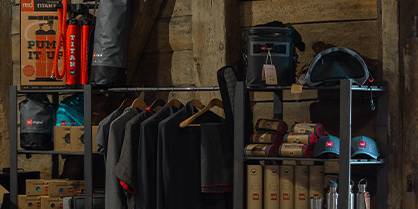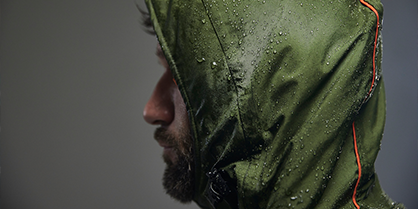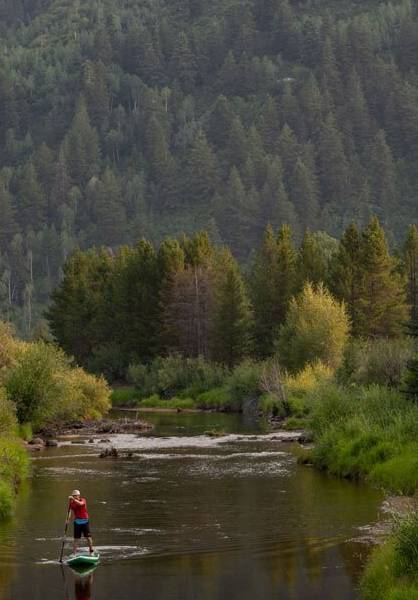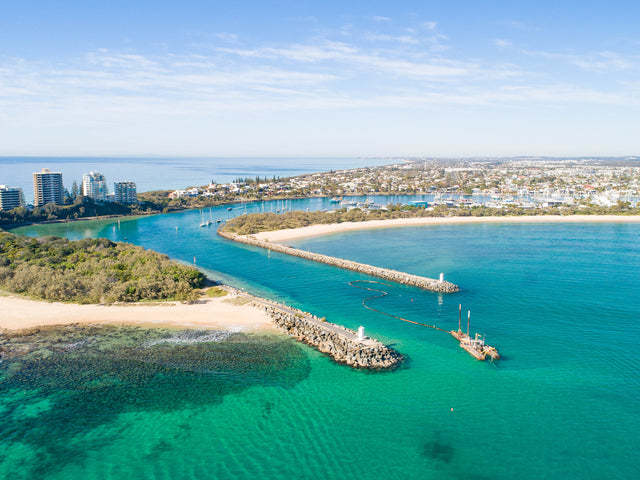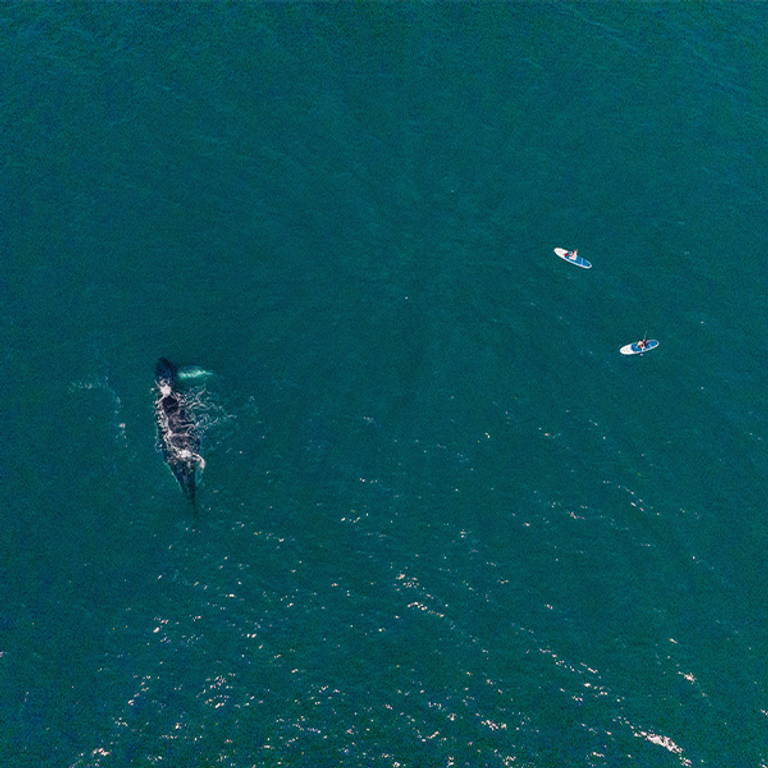
There Is No Planet B: Behind Red’s B Corp Certification
B Corp Brand Responsibility SustainabilityPosted by Lydia Burdett
Sustainability and responsible business ethics have long been at the heart of what we do at Red Paddle Co, which is why we’re so proud to have achieved B Corp Certification. B Corp status means a lot to us, but of course, not everyone knows quite what this actually means. We asked our Head of Design, Phil Hawthorne, to tell us more…
What is B Corp and Why Should We Care?
B Corp stands for Benefit Corporation and is a certification granted by B Lab, a non-profit organisation that aims to promote sustainable business practices. Typically B Lab opt to award B Corp Certification to companies that meet certain ESG (environmental, social, governance) standards, taking into consideration overall performance, accountability, and transparency.
B Corp companies have all made a commitment to use their business as a force for good. They are businesses that believe in using their power to create positive change in the world through value for all stakeholders, not just shareholders. In return for such sought-after status, certified B Corps are legally required to consider the impact of their decisions on their workers, customers, suppliers, community, and the environment. They must also publish an annual report that assesses their social and environmental performance.
What motivated Red Paddle Co to pursue B Corp Certification?
In short – getting B Corp Certification is the right thing to do. The ‘business as usual’ model of take, make and dispose – driven purely by financial gain – is thankfully a dying concept. In the mid-20th century, industry was told that if a business wasn’t growing then it wasn’t successful. Of course, this is true to a point but has largely been skewed and misinterpreted to mean ‘expand’.
I often use the analogy of a tree, which is constantly growing yet it doesn’t necessarily get taller. It grows in strength and resilience, in its ability to adapt to its environment and provide nourishment and shelter to many different types of life. This is what I believe is the key to sustainable business: creating shared value at numerous levels. For our employees and customers, our environment, suppliers and manufacturers, our distribution and retail network and communities.
At Red, we strive to provide the best possible experience we can, with what we have available, to ‘Inspire Adventure’ and help our customers enjoy the outdoors. To do that we must act with the utmost integrity. That’s why we set out to apply for B Corp Certification; we wanted a third-party organisation to challenge us and not just expect our customers to blindly believe what we say. We wanted someone with real substance to review what we’re doing and assign a value to it, a badge of honour to show the world. No, we’re not perfect, but we’re taking steps to be more responsible and have a more positive impact on this planet we all share. That’s what B Corp certification is all about.
What challenges did you face in the certification process?
It was tough! We’re scored on our business practices covering several main areas: governance, workers, community, environment, and customers. I’d say our main challenge was coordinating our efforts, as it was the first time we’d done anything like this.
How did you involve the whole company in that process?
We predominantly took a top-down approach, focusing on senior management. They could quickly gather any information needed from their respective teams and if it wasn’t available could integrate it into their team’s workload.
Did you have to make any changes to Red’s products, services, or operations?
We’ve always strived to do the best we can in all areas of the business. This meant that we were quite fortunate in the application process, as a large portion of what we needed to do to achieve B Corp Certification was already in place. However, there were definitely some areas that needed to be more formally documented and several policies that required either creation or updating.
There are some areas where we felt we could have made extra ground. While the application process couldn’t accept these, they may be introduced in the future. This was simply our competitive nature pushing through and our desire to shout about our compliance and testing work, plus some of our more advanced circular design strategies. On reflection, this reinforces that B Corp Certification is for the masses – to get everyone on a more positive trajectory. I’m sure that other early adopters are also doing things that aren’t considered when applying for B Corp, so this is for us to communicate better.
What are some of the best practices for designing sustainable yet profitable products?
Knowing why you’re doing what you’re doing is absolute ground zero. If you don’t know this then you’re just floating in empty space. Active listening and a positive culture are also key to fostering positive output. Following that, the best practice for creating value involves using ‘design thinking’ which lets you review lots of wide-ranging ideas and solutions and iteratively work to build, test, refine, and learn. In that sense, you can know that what you’re designing will be well received.
By applying design thinking in product management, we can not only meet the requirements of our brief but also create additional value in terms of sustainability and user satisfaction. This kind of value is essential for making our products profitable and our past achievements such as FFC, Titan 2, V-Hull and the Compact are all great examples of this.
How can design be used to promote social and environmental responsibility?
By being the example and leading the way. Education is key, and by showing that we can achieve the same result or better using sustainable practices, we can show others that you can have a great product that is also responsible. It needn’t be a case of one or the other and B Corp Certification celebrates this idea.
Ultimately, social and environmental responsibility needs to come from the top – if not, you just can’t get the resources or drive you need to make any real progress. At a product level, you need to create genuinely positively impacting products. When that isn’t possible, you need to make them less damaging and ensure they are produced as responsibly as you can. This is why we put so much time and effort into our Tec Air process, making sure our boards are as considered and durable as possible.
What Are The Future Challenges And Opportunities For B Corps?
Raising awareness of B Corp Certification and ESG is the biggest challenge, but it’s also a huge opportunity. I think one of the biggest challenges every company will face is how they prioritise what they feel is important to them and their customers. We are in a climate crisis today, which is certainly what every company should be taking action on right now. But we also have so many other crises and global issues with so many people in need. It’s important for organisations to navigate these priorities carefully.
The expansion of B Corp and potential changes to their application process aim to enhance accessibility, but maintaining high standards will be crucial to prevent dilution of the certification. Managing the coordination of these requirement initiatives throughout the organisation for tracking and execution might also be a challenge.
How Has Certification Helped Red Improve?
B Corp Certification has helped add some weight to what we’re doing in general and highlighted our ESG credentials. In more practical terms, it has acted as a catalyst for certain areas such as reducing our carbon footprint. We all need to understand how much carbon we’re using in our day-to-day activities before we can set benchmark targets that can be measured and included within commercial objectives. You can’t gauge improvement without a system of measurement.
With regards to community, I think this is something Red does very well. Whenever a decision needs to be made there’s always serious consideration as to how this will impact the distribution and retailer network. Balancing any potential tensions there may be from a national or local level has a direct impact on all of their local communities. Our own local community without question has benefited and continues to benefit from the work Red is doing, creating demand for local services, jobs and events. There’s still so much opportunity to be addressed around this area, but B Corp is helping to pull the work we’re planning on doing to the forefront.
What are your plans for continuing to improve Red’s B Corp score?
We’re trying to take as many steps as possible to be more responsible and have a positive impact. B Corp may be adapting its scoring system and we don’t have visibility of that right now. This doesn’t mean we have to stop, though. We have to keep going on our positive impact journey across the board.
See our B Impact Score here

